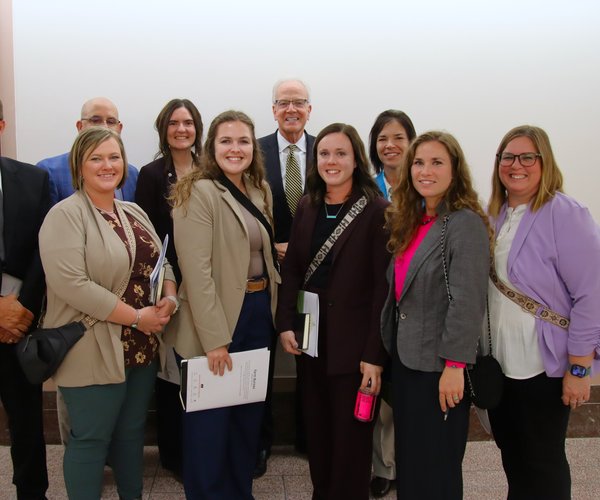As of Tuesday, Sept. 16th, the drought monitor report indicates little change except the little bit of increased moderate drought in North Central and Northeast Kansas with an increase in abnormally dry conditions along the Missouri border. The six-to ten-day outlook (Sept. 22 to 26) indicates a 70 to 90% chance of likely above normal for temperatures and normal to slightly below normal for precipitation. The eight to 14-day outlook (Sept. 24 to 30) indicates a 60 to 70% chance of likely above normal for temperatures and normal for precipitation. Temperatures will help fall crops head to harvest but not great for winter wheat establishment.
If you have paid any attention to the progress of our 2025 summer crops, the title may seem a bit odd. This is especially true if you follow the USDA reports on the acreage and yield potential of corn and soybeans. The Pro Farmer crop tour agreed. Acreage is up in corn over one million acres from earlier estimates, well over 90 million acres nationwide. Time will tell if this needs adjusting. Soybean and corn yields are projected to be in record territory though they have backed off a tick. Harvest is just starting, and they are seeing some lower-than-expected yield with some diseases. With all that, we are still dealing with a large crop for both in billions of bushels. Grain sorghum is more of a regional crop and receives less attention outside of Kansas, Oklahoma, and Texas but the crop looks good. Focusing on Kansas, this is for the entire state the best overall looking summer row crop yield potential in years. In our area overall, this appears to be the best-looking dryland corn, soybean, and milo crop in years. As in even the best years, heat and dry conditions did impact yield some, especially for soybeans. And the wheat crop, while not fantastic was acceptable. So, what’s the problem?
Actually, there are several. Prices are low, especially considering input prices, which spiked a bit more with the tariff uncertainty. Low grain prices are bad for feedlots, ethanol producers, and other end users but not for producers. And low prices normally help push exports. Storage is tight. In some states, producers often have a fair amount of on farm storage. It’s not that there isn’t any in Kansas, but our production is designed more for central grain storage locations. Simply put, here and across much of the Corn Belt, there isn’t enough storage for the grain coming in. There are reports that in Kansas, some co-ops are warning they may not take milo as they are concerned about corn and soybean storage. They would like to move the grain, but many producers don’t want to sell at the price offered. This normally, and already is, resulting in increased storage prices which are currently not cheap. If you are paying ten cents or more a bushel for storage, the costs add up in a hurry.
Finally, with all the “tariff wars”, sales of grain (wheat, corn, and especially soybeans) for export are down significantly. Add in the elimination of most USAID grain for countries with food shortages and it’s significantly hurting producers in the pocketbook.
Dr. Victor L. Martin is the agriculture instructor/coordinator for Barton Community College. He can be reached at 620-792-9207, ext. 207, or martinv@bartonccc.edu.





